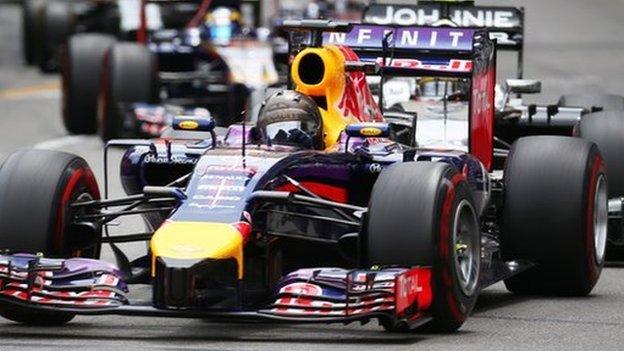Canadian GP: Hamilton fastest in second practice but crashes in rain
- Published
Canadian Grand Prix |
|---|
Venue: Circuit Gilles Villeneuve Dates: 5-7 June |
Live TV, text and radio commentary via the BBC TV, BBC Sport website and app. Full coverage details here. |
Lewis Hamilton set the pace and then crashed as Ferrari split the Mercedes in a rain-interrupted second practice session at the Canadian Grand Prix.
Hamilton headed Ferrari's Sebastian Vettel despite kerb-hopping the last chicane on what would have been his fastest lap.
Vettel's team-mate Kimi Raikkonen was also quicker than the second Mercedes of Nico Rosberg in fourth.
When rain hit, Hamilton slid at the hairpin, breaking his front wing.
It was the end of an up-and-down day for the world champion, who set the pace in both sessions despite a spin at the hairpin in first practice and a bounce over the kerbs on his first flying lap on the super-soft tyres in the second session.
Hamilton blamed the crash in the second session on his car aquaplaning - when the wheels float on water and the car cannot be controlled - as he was braking.
Hamilton's crash dissuaded anyone else from doing any running as the rain grew heavier to the end of the session.
BBC F1 analyst Allan McNish said: "It has not been a clean run for Lewis and these are the sort of things than can affect a driver. Each one you can compartmentalise but when they add up you have to take a breath and reset, which he can do overnight."
Mercedes F1 boss Toto Wolff said: "We wanted to do some clutch calibration and do some starts and just take it easy and this is how it ended.
"I think he just aquaplaned on the front and then you remove a lot of water which is why the rear wheels were still turning.
"I wouldn't interpret too much into it. It is just one of those Fridays when it is difficult to get a lap together."
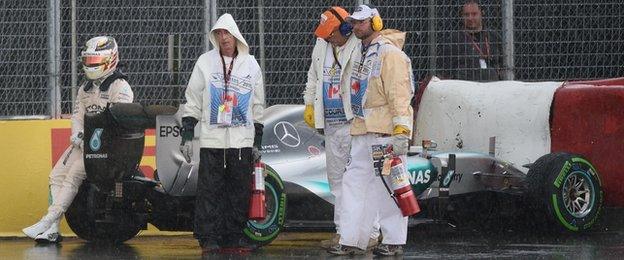
Hamilton calmly waved to the Canadian crowd who continued to brave the weather
Wolff admitted that Ferrari's pace on their race-simulation runs on a heavy fuel load before the rain hit was a concern.
Wolff said: "On the long runs they were extremely fast and they need to be taken seriously."
Hamilton was 0.316 seconds quicker than Vettel on headline lap times, with Raikkonen just 0.06secs adrift of his team-mate and Rosberg 0.452secs slower than the world champion.
The margin between Hamilton and Rosberg was similar to that in the first session, when they were first and second quicker and more than 1.5secs clear of the Ferraris.
The rain, which came 35 minutes into the session, led to a compressed period of running, with most teams trying both sets of tyres and fitting in a short run on a race fuel load before the track the soaked.
Mercedes - or at least Hamilton - appear to retain an edge on one-lap pace but the suggestion from Friday's running was that an upgrade to their engine might have moved Ferrari into a more competitive position.
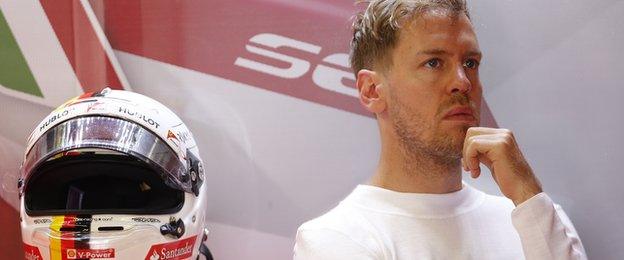
Can Sebastian Vettel give the Mercedes cars a race on Sunday?
The Italian team have used three of their permitted 10 remaining engine development 'tokens' on an upgrade to their combustion system.
Insiders say that the improvement is worth about 15bhp in overall power.
And their race simulation runs were very impressive, with Vettel complaining that he could run faster than Rosberg, who was running ahead of him on track.
The lap times bore him out. Both Ferraris ran in the one minute 18-second bracket, with Vettel on the super-soft tyre and Raikkonen on the soft, while the Mercedes were in the one minute 19s.
However, the gap between the two teams suggests that Ferrari may have been running on a lighter fuel load.
Red Bull team principal Christian Horner said: "Ferrari look very strong on race-simulations. Either they put a little less fuel in their cars or they are seriously quick."
Behind the Mercedes and Ferraris, Lotus appear set for a strong weekend, with Pastor Maldonado in fifth place and Romain Grosjean in seventh, sandwiching the Williams of Valtteri Bottas.
The Finn's team-mate Felipe Massa was eighth ahead of the Red Bulls of Daniil Kvyat and Daniel Ricciardo.
Force India's Nico Hulkenberg was 11th, ahead of the Sauber of Marcus Ericsson and Carlos Sainz's Toro Rosso.
The fastest McLaren-Honda was only 15th in Fernando Alonso's hands, the car 20km/h down on the straights compared to the Mercedes.
The Spaniard's team-mate Jenson Button was 18th, 0.508secs off Alonso's pace.
McNish said Button appeared to be struggling on corner entry with the McLaren.
"The Canadian Grand Prix has everything" |
|---|
For a start, there's the location. On a picturesque island in the middle of the forbidding St Lawrence Seaway, a stone's throw from downtown Montreal, one of the world's great cities. |
The place is steeped in history. The race dates back to 1967, this specific venue to 1978, when Quebec-born Gilles Villeneuve won the inaugural race and created an instant national hero out of a man who was to go on to become one of the all-time greats. His legacy remains in the thousands who pack the place out every year. |
And then there's the track. Apparently a simple mix of straights and chicanes ring-fenced by two hairpins, it is in fact deceptively difficult. Low-grip asphalt ringed by walls waiting to catch the unwary or careless. |
Crashes are virtually guaranteed; breathless racing action, too. Add it all up, and it's no wonder it's one of the most popular races on the calendar. |
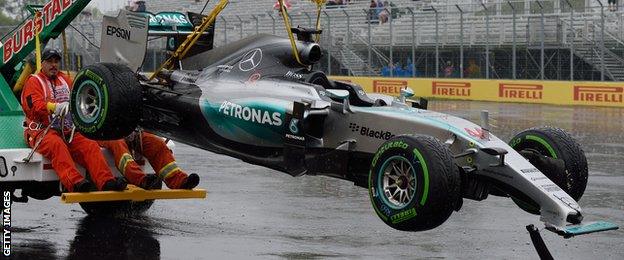
Hamilton's car was removed from the track by crane, and almost suffered further damage when it was lifted out of the barrier perhaps with a little more force than Mercedes would have liked
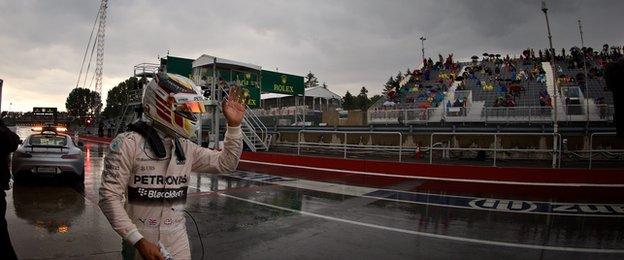
As Hamilton walked back to the pit lane, Mercedes tweeted he was "thankfully unhurt" in the low-speed crash
- Published5 June 2015
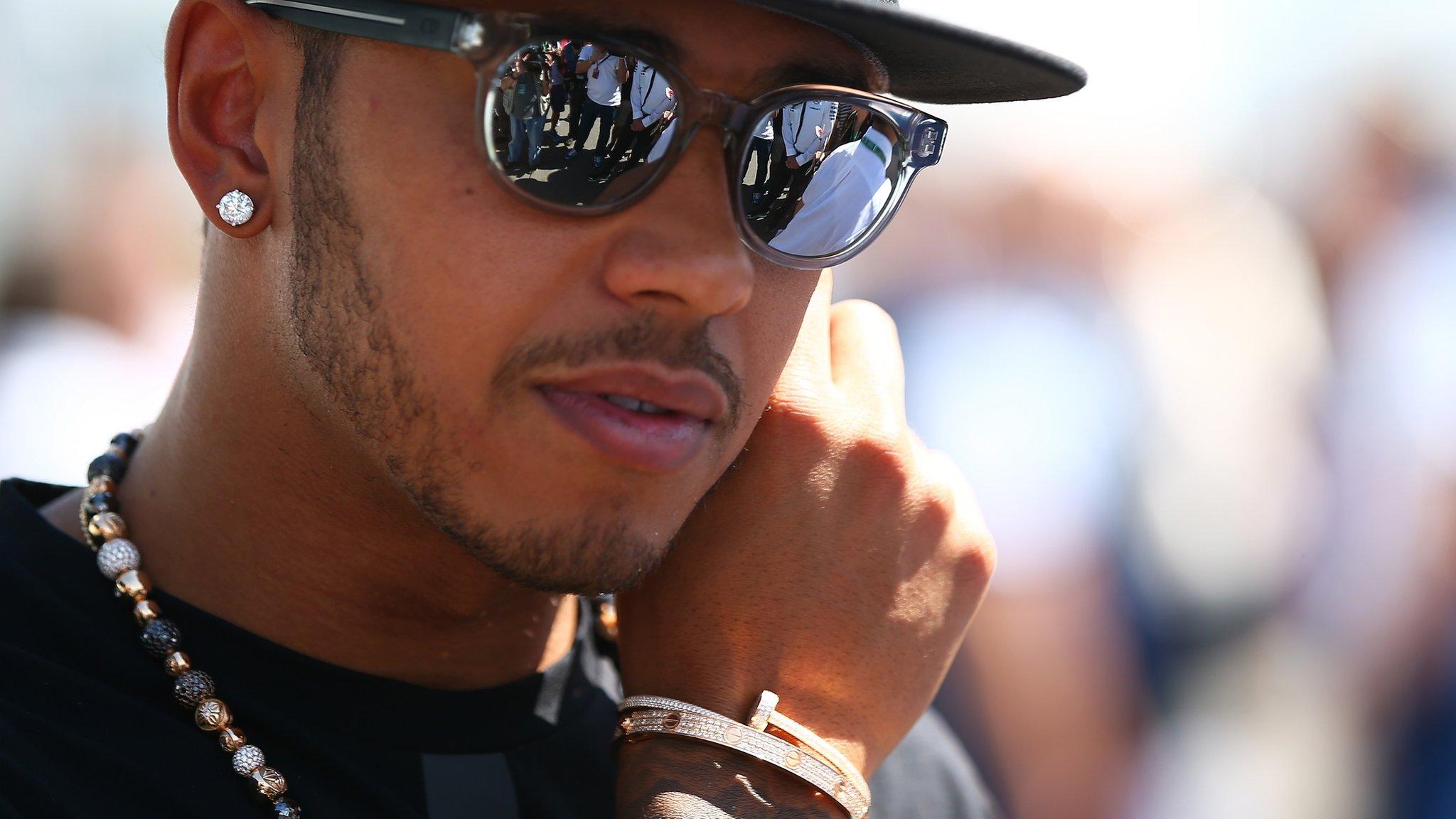
- Published1 June 2015
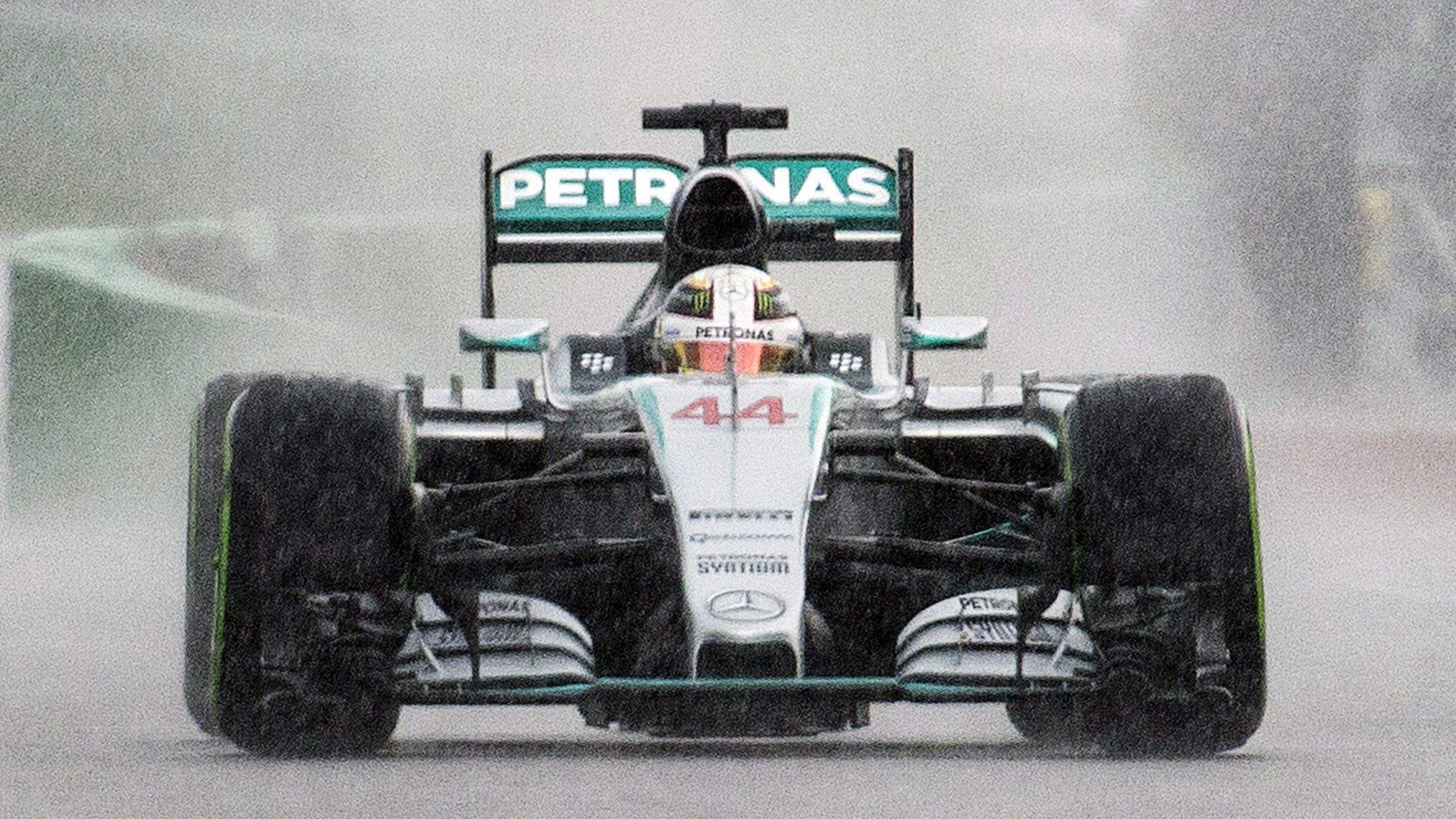
- Published5 June 2015
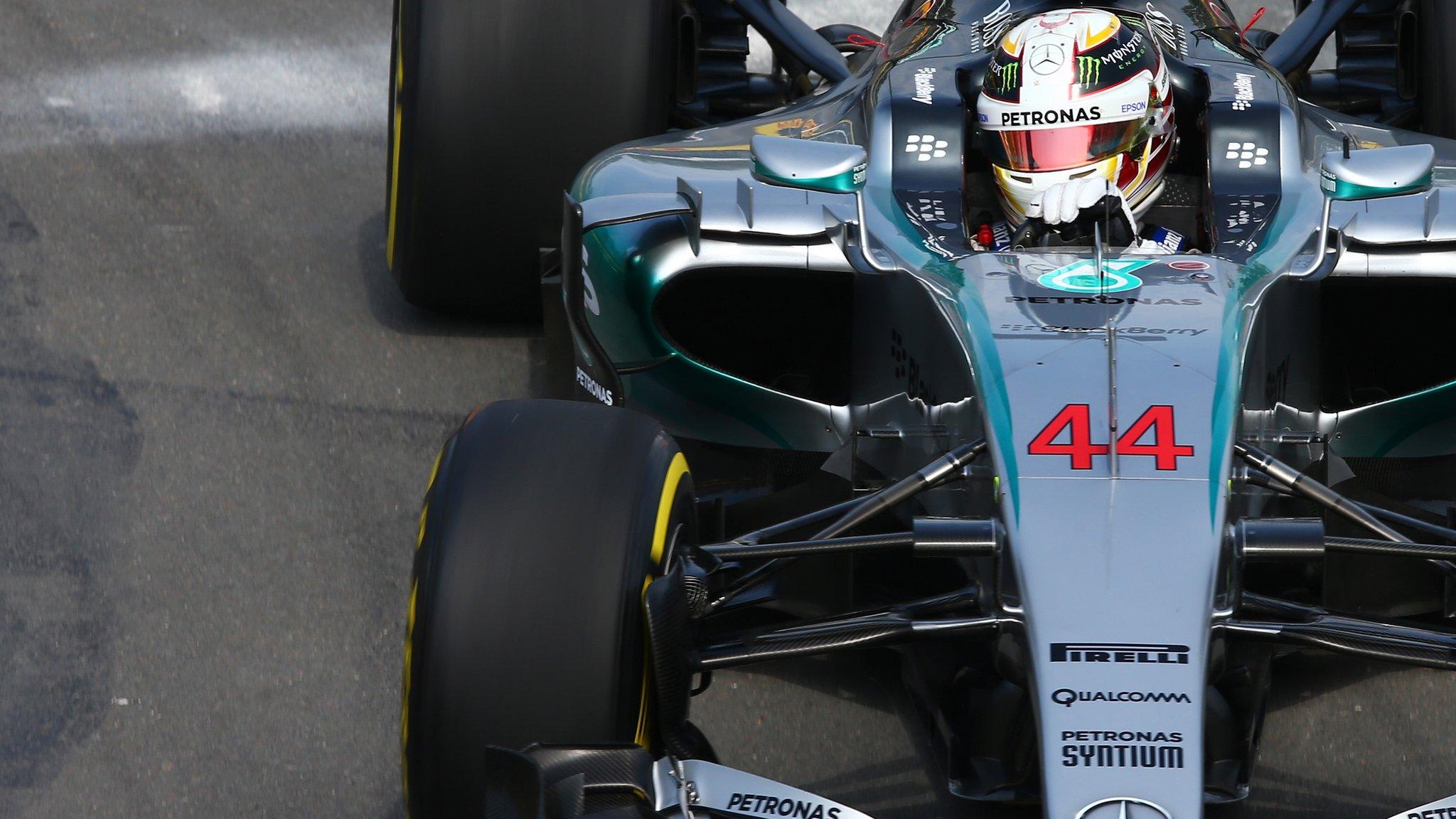
- Published4 June 2015
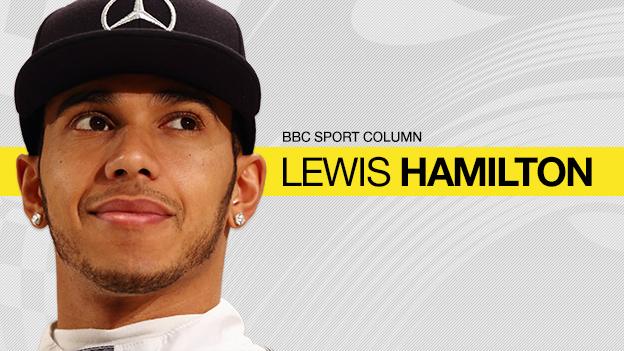
- Published2 November 2018
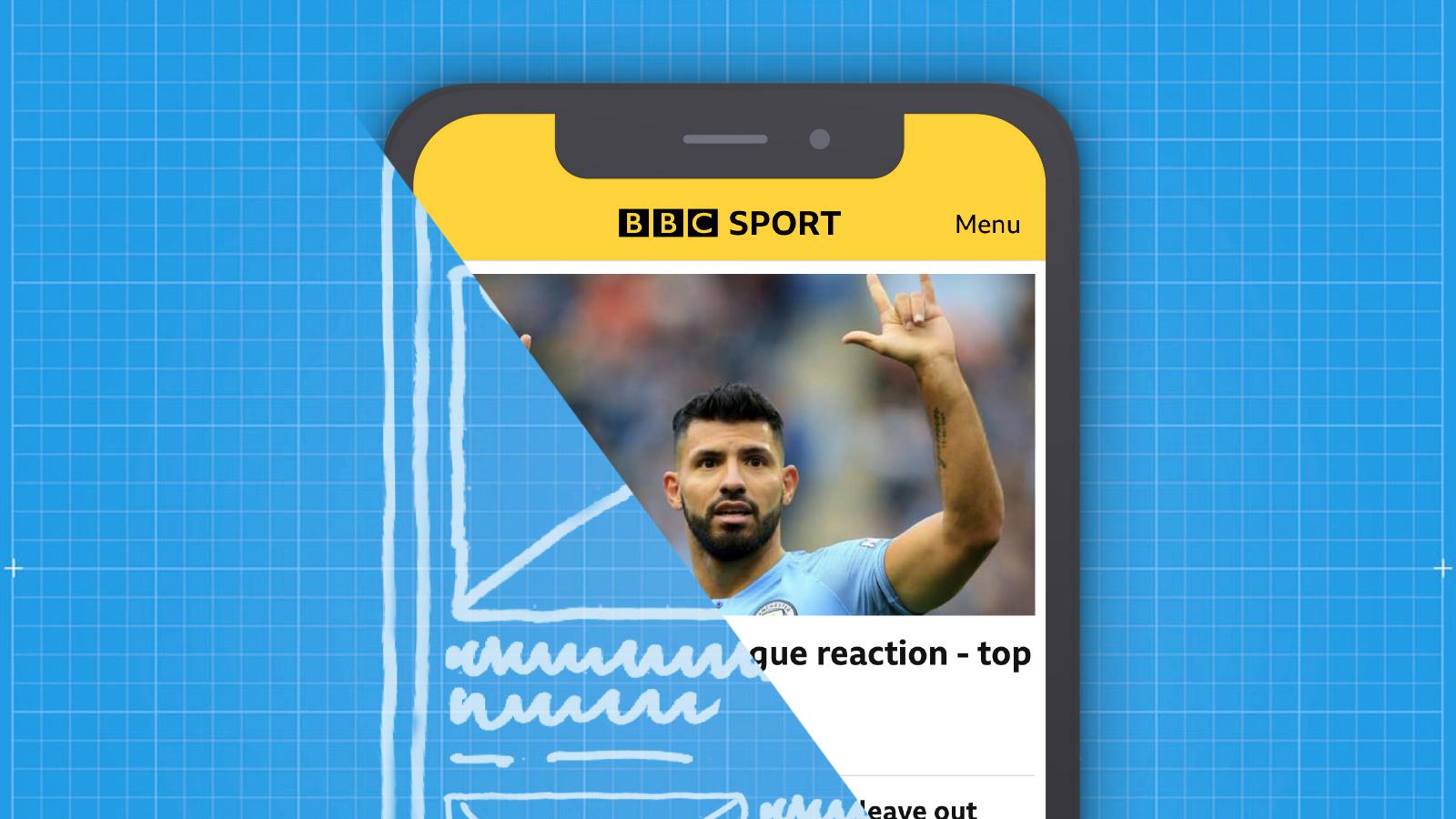
- Published26 February 2019
